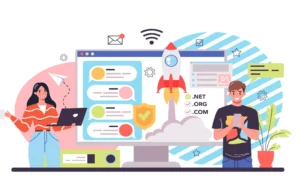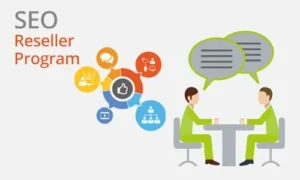In the rapidly evolving landscape of technology, the integration of Internet of Things (IoT) devices into our everyday lives has become increasingly prevalent. One of the most exciting applications of IoT technology is in smart homes, where devices such as thermostats, lights, security cameras, and even kitchen appliances are connected to the internet, allowing for remote control and automation.
In this blog post, we’ll delve into the fascinating world of web development for smart homes, exploring how websites can be connected with IoT devices to create seamless and efficient living spaces
Understanding Smart Homes and IoT:
Before we dive into the intricacies of web development for smart homes, let’s first understand what constitutes a smart home and how IoT technology plays a pivotal role in its functionality.
A smart home refers to a residence equipped with devices that can be controlled remotely via the internet. These devices are embedded with sensors and software that enable them to communicate and interact with each other. The IoT aspect comes into play as these devices are connected to the internet, allowing users to monitor and manage them remotely through smartphones, tablets, or computers.
The Benefits of Web-Connected Smart Homes:
The integration of web development with IoT devices in smart homes offers a myriad of benefits to homeowners, including:
- Convenience: With web-connected smart homes, users can control various devices from anywhere with an internet connection. Whether it’s adjusting the thermostat, turning off lights, or checking security cameras, all can be done remotely via a website or mobile app.
- Energy Efficiency: Smart home systems can optimize energy usage by automatically adjusting settings based on user preferences and environmental conditions. Web development plays a crucial role in creating intuitive interfaces for users to monitor and manage energy consumption efficiently.
- Enhanced Security: Web-connected security systems allow homeowners to monitor their property in real-time and receive instant alerts in case of suspicious activities. Integrating websites with IoT devices enables seamless access to security cameras, door locks, and alarms from a centralized platform.
- Customization and Personalization: Through web development, smart home systems can be customized to meet the specific needs and preferences of homeowners. Whether it’s creating schedules for automated tasks or setting up personalized profiles for different family members, web-connected smart homes offer unparalleled flexibility.
Web Development for Smart Homes:
Now, let’s explore how web development is utilized to connect websites with IoT devices in smart homes:
- IoT Protocols and APIs: Web developers leverage IoT protocols such as MQTT (Message Queuing Telemetry Transport) or HTTP to establish communication between websites and IoT devices. Additionally, APIs (Application Programming Interfaces) provided by device manufacturers enable developers to integrate device functionalities into web applications seamlessly.
- User Interface Design: Designing user-friendly interfaces is crucial for web-connected smart home systems. Web developers focus on creating intuitive dashboards and control panels that allow users to easily monitor and manage their IoT devices. Responsive design principles ensure that the interface is accessible across various devices and screen sizes.
- Data Management and Analytics: Web development plays a vital role in managing and analyzing data collected from IoT devices in smart homes. Developers implement robust backend systems to store, process, and analyze sensor data, providing valuable insights to homeowners for optimizing device performance and energy efficiency, opined website developers based in Bangalore.
- Security Considerations: Ensuring the security of web-connected smart home systems is paramount. Web developers implement robust authentication and encryption mechanisms to protect sensitive user data and prevent unauthorized access to IoT devices. Regular security audits and updates are essential to mitigate potential vulnerabilities and safeguard against cyber threats.
Case Studies:
Let’s take a look at two real-world examples of web-connected smart home systems:
- Smart Thermostat Control: A web-based dashboard allows users to remotely adjust the temperature settings of their smart thermostats based on their preferences and schedules. Integration with weather APIs enables the thermostat to automatically adjust settings to optimize energy efficiency.
- Home Security Monitoring: A web application provides users with real-time access to security cameras, motion sensors, and door locks installed in their homes. Users can receive instant alerts and notifications on their smartphones in case of suspicious activities, allowing them to take appropriate action.
Conclusion:
Web development plays a pivotal role in connecting websites with IoT devices to create smart homes that offer convenience, energy efficiency, security, and customization. As technology continues to advance, the integration of web development with IoT will further enhance the functionality and accessibility of smart home systems, revolutionizing the way we live and interact with our living spaces.






















